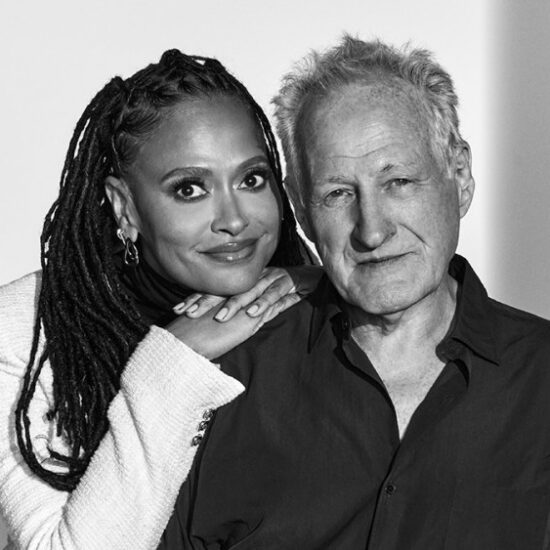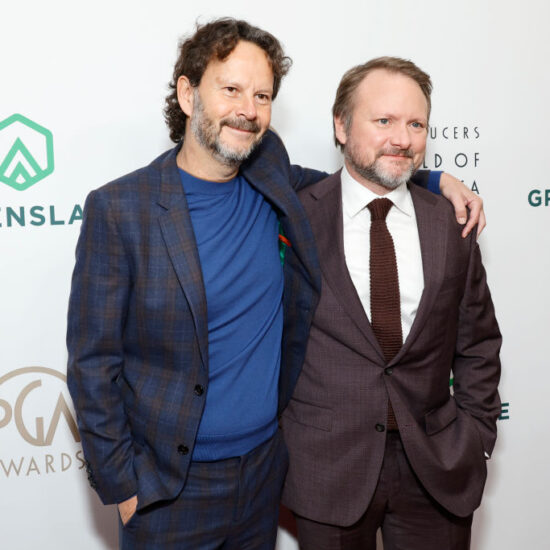
For Oscar-nominated prosthetic makeup designer Adrien Morot, Darren Aronofsky’s The Whale represents one of the greatest creative risks taken in a career of around three decades.
On the A24 drama based on the acclaimed play by Samuel D. Hunter, he would need to facilitate the complete transformation of Brendan Fraser into Charlie, a reclusive, 600 lb. English teacher looking to reconnect with his estranged daughter Ellie (Sadie Sink) in his final days.
While the notion of creating “invisible” makeups had been at the bedrock of Morot’s creative work long before this project came around, the stakes in doing so, in this case, could not have been higher. “I’ve never been put in a position like that,” says the designer, “where if the makeup…becomes a distraction for any reason, the movie doesn’t work.”
But even if the Charlie prosthetics are a kind of optical illusion on which the success of the film rested, both Morot and Fraser affirm during a conversation for Deadline’s video series The Process that the pursuit of verisimilitude in both makeup and performance was actually about so much more. What The Whale creatives’ drive to be true to life actually had more to do with was the orientation of the film towards its protagonist.
While over the last 127 or so years, countless films have employed the “fat suit” for the purpose of crude comedy — to make a joke at the expense of, or otherwise belittle a character — Aronofsky’s is a film of far greater empathy with interest only in subverting historic tropes, which would treat its subject with the utmost reverence and respect.
Morot expressed great concern that he might not do justice with his work to the “important” and “beautiful” character that is Charlie — particularly in the beginning, when he’d been told by Aronofsky that he’d have just five weeks to create Fraser’s prosthetics. Fortunately, in the end, the filmmaker gave him 12, with Fraser praising Morot’s creations for the project not only as “authentic and dignified and respectful and accurate,” but “wildly beautiful,” as well.
“Without you, there would be no Charlie. If the makeup didn’t work, I could do all my pretty, pretty acting and it wouldn’t matter,” Fraser tells Morot. “You gave me the role of a lifetime. And I thank you for that — for transforming me physically in a way that in my fondest imagination, I never could have imagined.”
Morot came to The Whale after collaborating with Aronofsky on his films The Fountain, Noah and Mother!, and was initially told that he’d be crafting more “limited” prosthetics for Charlie, solely reshaping Fraser’s head and hands. Still, the suit he wound up creating, weighing between 50 and 300 lb. on any given production day, was far more expansive in scope — satisfying Aronofsky’s desire to see “as much as possible” of the character on screen.
Morot notes on The Process that his methods of creating The Whale‘s prosthetics broke new ground out of necessity, given that his work took place at the height of the Covid pandemic. The typical first steps for a prosthetic artist working in film are to take a physical, 3D mold (or lifecast) of an actor, that serves as the basis for the creation of silicon appliances. But because Morot lacked physical access to Fraser in this case, as he started out in his work, he’d instead need to have the actor’s measurements taken remotely, such that he could create a “perfect replica” of him in the computer. Pieces of this 3D model would then be brought into the world via a 3D printer.
While prosthetics have seldom, if ever been created in this fashion for an entire film or television project, the digital workflow adopted by Morot enabled him a level of precision in his designs that wouldn’t otherwise be possible. Fraser says that the designer demonstrated “absolute dominion” over every detail of the prosthetics, capturing “all the little shapes and anomalies of the human body,” down to the level of individual pores in the skin.
“Normally when you’re sculpting, you can do really fine sculpture with clay and more traditional compounds…But you’re limited by the size of your tools and how good your eyes are. But when you’re working on the computer, you can actually zoom in to the corner of your eye, until the corner of your eye fills in the entire screen,” explains Morot. “I can take the picture of the eye texture of somebody else and go and apply that onto my model, and it’s no longer a sculpture. It’s almost like a texture mapping, so it’s exactly what the human wrinkles will look like, down to the pore. It’s a level of precision that’s completely unmatched in anything that’s been done before.”
Enjoying the best limited opening of the year in its December 9 unspooling after world premiering to critical acclaim at the Venice Film Festival, The Whale also stars Hong Chau, Ty Simpkins and Samantha Morton. Aronofsky directed from a script by Hunter, also producing alongside Jeremy Dawson and Ari Handel.
In conversation with Fraser on The Process, Morot speaks to his skill from an early age at creating “hyperrealistic portraits,” his first conversations with Aronofsky about The Whale and the family atmosphere the director creates on set, the research and other kinds of work that went into his prep process on the film, the incredible grace and patience Fraser exhibited during a physically and emotionally challenging shoot, and more.
Fraser speaks for his part to research and time spent with the Obesity Action Coalition in prep, coming to grips with the realities of Charlie’s physical existence, why it was crucial to him that his prosthetics “obey the laws of gravity and physics,” memories of an early six-hour makeup test at the offices of Aronofsky’s production company, drawing inspiration while being forced to sit still for makeup application from the “sanguine demeanor” of his one-time horse Pecas, feeling emotional after wrapping production for reasons he didn’t totally understand, and takeaways from the story of The Whale, among other topics.
View the entire conversation above.













